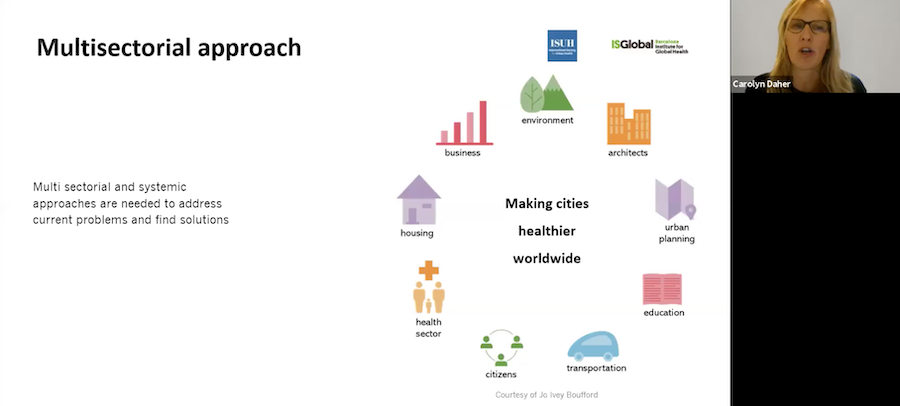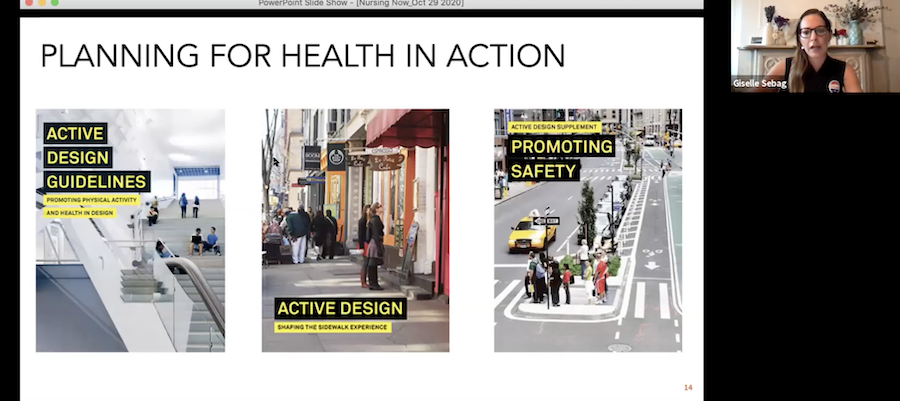Public health / Healthy Cities
Nightingale Challenge: Creating and sustaining health in the community
By Andrew Sansom | 03 Nov 2020 | 0
Much of the rhetoric around COVID-19 is about winning a war. But there is another equally important health agenda, one that is focused on winning the peace and securing a better and healthier future for everyone: health creation.
These were the opening remarks of Lord Nigel Crisp, co-chair of Nursing Now, during a webinar on creating and sustaining health in the community, and promoting the second challenge of the Nightingale Challenge Global Solutions Initiative.
The Challenge seeks to:
- facilitate global interaction and partnerships between nurses and midwives;
- encourage the development of practical nurse- and midwife-led solutions globally, thereby supporting the career development of participating nurses and midwives;
- provide a space for nurses and midwives to share expertise and demonstrate the power of their knowledge through their innovative solutions to everyday global health challenges; and
- raise awareness of global health issues and develop bold, practical ideas to improve public health.
It will run until 16 November when Lord Crisp, along with the expert panel, will select the winning entry. The creator/s of the winning innovation will be invited to present their solution at the 4th Healthy City Design 2020 International Congress, organised by SALUS, in partnership with the Royal College of Art, and held virtually from 30 November to 3 December. They will also be offered a mentoring session with Lord Crisp.
Speaking as part of the webinar, which was chaired by Professor Lisa Bayliss-Pratt, programme director of the Nightingale Challenge, Lord Crisp emphasised the importance of the role that nurses play as facilitators of health in the local community – not only by helping communities to create health but also to take control and organise themselves.
Social determinants of health
Healthy City Design 2020 programme committee member Carolyn Daher, co-ordinator of the Urban Planning, Environment and Health Initiative at ISGlobal, then provided attendees with an overview of the social determinants of health. Given that a lot of the drivers of health come from outside the health sector, she urged nurses to connect with other professionals in their communities who are planning transport systems, and designing the urban environment and services within them, and act as an advocate for what people need: “healthy environments that allow them to make healthy choices in the most efficient and effective way”.
Daher explained how her organisation, ISGlobal, focuses its work on five main urban factors: air pollution, noise, physical activity, natural spaces and temperature – stressing that there is “no stage of life, nor age, nor demographic that is not affected by these exposures”.
Describing many of the negative health effects associated with these issues, she added that almost 3000 cases of premature mortality could be avoided every year in the city of Barcelona “if we were able to meet the requirements from the World Health Organization on these five factors”.
The Sustainable Development Goals offer a good roadmap, she said, and they illustrate the interaction and interconnection of the myriad factors of urban health and sustainable development. But the health prevention and creation agendas require multi-sectorial and systemic approaches to address current problems and find solutions. Nurses, she concluded, are particularly well positioned to engage with communities to make change happen and create healthy environments together.
Design and planning interventions
Fellow Healthy City Design 2020 programme committee member Giselle Sebag, global cities consultant at Bloomberg Associates, then offered some practical examples of urban design and planning interventions that have helped improve community health and resilience. And she emphasised that the design of our communities and cities is very much a choice and one that can be changed.
Citing examples from a 2016 programme on which she worked with the US Centers for Disease Control and Prevention, Sebag underlined the importance of making sure that public transportation is located within a safe walking distance of the workplace. “The reason for that is that walking to and from public transportation can help physically inactive populations, especially low-income and minority groups, attain the recommended level of physical activity,” she explained. 
Further actions include: providing an outdoor space amenity that is accessible from a building entrance – to increasing exposure to nature and, consequently, boost mental health and wellbeing; locating the main entrance of workplaces oriented to pedestrian traffic and transit – to boost health as part of the journey from work to home; making stairs clearly visible with code-compliant glass or through a prominent location – with evidence showing that two minutes of stair climbing a day burns enough calories to prevent the average US adult’s annual weight gain; and encouraging healthy food selection with the choice of architectural practices, as well as using pricing incentives for healthy food consumption.
Nurses, she concluded, can do a lot to help create and sustain health in the community, through: being an advocate for a healthier workplace environment; using active transportation to get to work; participating in public engagement processes of local urban planning, transportation, and parks and recreation departments, and championing health in their work; educating parents on the benefits of walking to school; starting or joining an education community garden; and getting neighbours, parents and friends involved in their efforts.
Designing resilient communities: recovery, renewal and renaissance
Finally, director of SALUS Global Knowledge Exchange – co-organiser of Healthy City Design 2020 with the Royal College of Art – Marc Sansom emphasised the important role of nurses in creating health in their communities in the context of recovery, renewal and renaissance, the theme of this year’s congress.
“In this pandemic, when the world is highly stressed, we need to look where the hope is and where that renaissance is, and much of that is going to come from that creative, interdisciplinary working together,” he said.
Resilience, he argued, has taken on a whole new dimension during this pandemic, and there is a clear need to be agile in adapting not only to be disease-resistant but to be health-creating in the culture and design of our cities and communities. Nurses, he added, can play a powerful role in helping to embed this philosophy, at the very heart of which is social and community resilience.
The Health City Design 2020 congress will explore how design strategies in the built environment can create more social connections among people, considering aspects such as: improving air quality; decreasing social isolation; reducing health inequalities; delivering green spaces; providing safe, affordable and health-promoting housing; and ensuring access to locally sourced nutritious food.
And while nurses can help co-design the communities in which we live, they also have a huge role to play in activating them. “It’s one thing building and designing them,” he concluded, “but people are then needed to activate those spaces and make them work.”
Nightingale Challenge: To view and download guidance for applicants on how to enter the challenge, please click here.
Healthy City Design 2020: To book your tickets for Healthy City Design 2020, please visit the virtual event site. Both one-day and four-day tickets are available, with early bird rates available until 20 November. Members of any of our partner organisations (which can be viewed here) are also eligible for a 15% discount on four-day tickets. Click here to apply for a discount code, or contact the event partner direct.
Organisations involved


